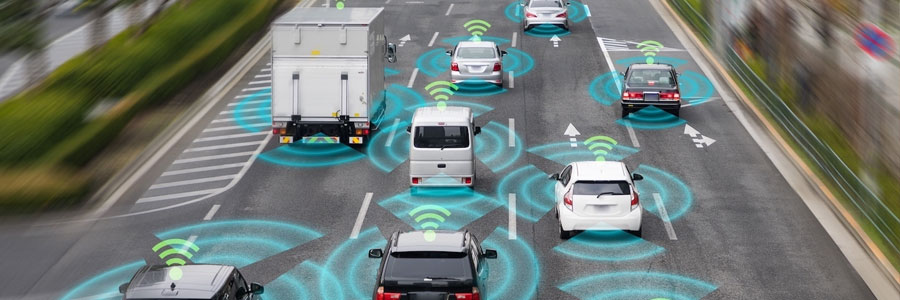New rules on autonomous cars

The Government is quietly paving the way for self-driving cars on UK roads. You may recall we recently told you about changes to the Highway Code designed to protect more vulnerable road users. At the time it was made clear by various organisations and experts that further updates would be needed to reflect the changing technology of fully autonomous vehicles.
The Government's consultation on the rules for the safe use of automated vehicles was launched in April 2021 and sought views on draft text to be included in The Highway Code. It may only be an interim fix for now, but those updates are starting to be realised.
No self-driving cars are currently allowed on UK roads, but the first vehicles capable of driving themselves could be ready for use later this year, according to the Department for Transport (DfT). The planned changes to the code are expected to come in over the summer, although they are described as an interim measure to support the early adoption of the technology with a full regulatory framework planned to be implemented by 2025.
The changes will say drivers must be ready to take back control of vehicles when prompted, with the first use of self-driving technology likely to be when travelling at slow speeds on motorways, such as in congested traffic.
They will also confirm that users of self-driving cars will not be responsible for crashes.
Instead, insurance companies, not individuals, will be liable for claims in many circumstances. While a self-driving vehicle is driving itself, you are not responsible for how it drives. You will be allowed to turn your attention away from the road and you may also view content through the vehicle's built-in infotainment apparatus. A word of warning though: you might be allowed to watch TV on your infotainment system but using your mobile phone while driving will remain illegal.
As it stands right now any amendment to the Highway Code will likely need further changes to keep up with the technology. The full text of the proposed self-driving regulations is outlined below.
Draft amendment to The Highway Code – a new section for self-driving vehicles
Self-driving vehicles
When using the term ‘self-driving vehicles' we mean those vehicles listed as ‘automated vehicles' by the Secretary of State for Transport under the Automated and Electric Vehicles Act 2018. You can check on GOV.UK if your vehicle is self-driving.
These vehicles are capable of safely driving themselves when the self-driving function is correctly turned on and the driver follows the manufacturer's instructions. While the vehicle is driving itself, you do not need to monitor it.
Self-driving vehicles differ from vehicles that are fitted only with assisted driving features (like cruise control and lane-keeping assistance). Assisted driving features can do some of the driving, but the driver still needs to be responsible for driving at all times. If you are driving a vehicle using only its assisted driving features, rule 150 of The Highway Code applies.
A self-driving vehicle's ability to drive itself may be limited to certain situations or parts of a journey. Things like the type of road, time of day, weather, location, and speed may affect this. You should follow the manufacturer's instructions about when and how to use the self-driving function safely.
But you must still follow all relevant laws, such as:
- you must be fit to drive (for example you must be within the drink drive legal limits and not be under the influence of drugs) – see rules 90 to 96
- the vehicle must be road legal (for example it must have an MOT certificate, if applicable and it must be taxed and insured) and the vehicle must be roadworthy (see rules 89 and 97 and annexes 3 and 6) – you will also still be responsible for your passengers and anything else you are carrying (see rules 98 to 102)
- you must not do anything illegal, like using a hand-held mobile phone, or similar hand-held device – there are exceptions to this, which are set out in rule 149.
If a self-driving vehicle needs to hand control back to the driver, it will give you enough warning to do this safely. You must always be able and ready to take control and do it when the vehicle prompts you. For example, you should stay in the driving seat and stay awake. When you have taken back control or turned off the self-driving function, you are responsible for all aspects of driving.
Source: GOV.UK
View our latest blog posts

Categories
Pages
We are a family run business based in rural Worcestershire. Our team of 38 staff are on hand to provide an exceptional service to personal and business customers.
Read More
